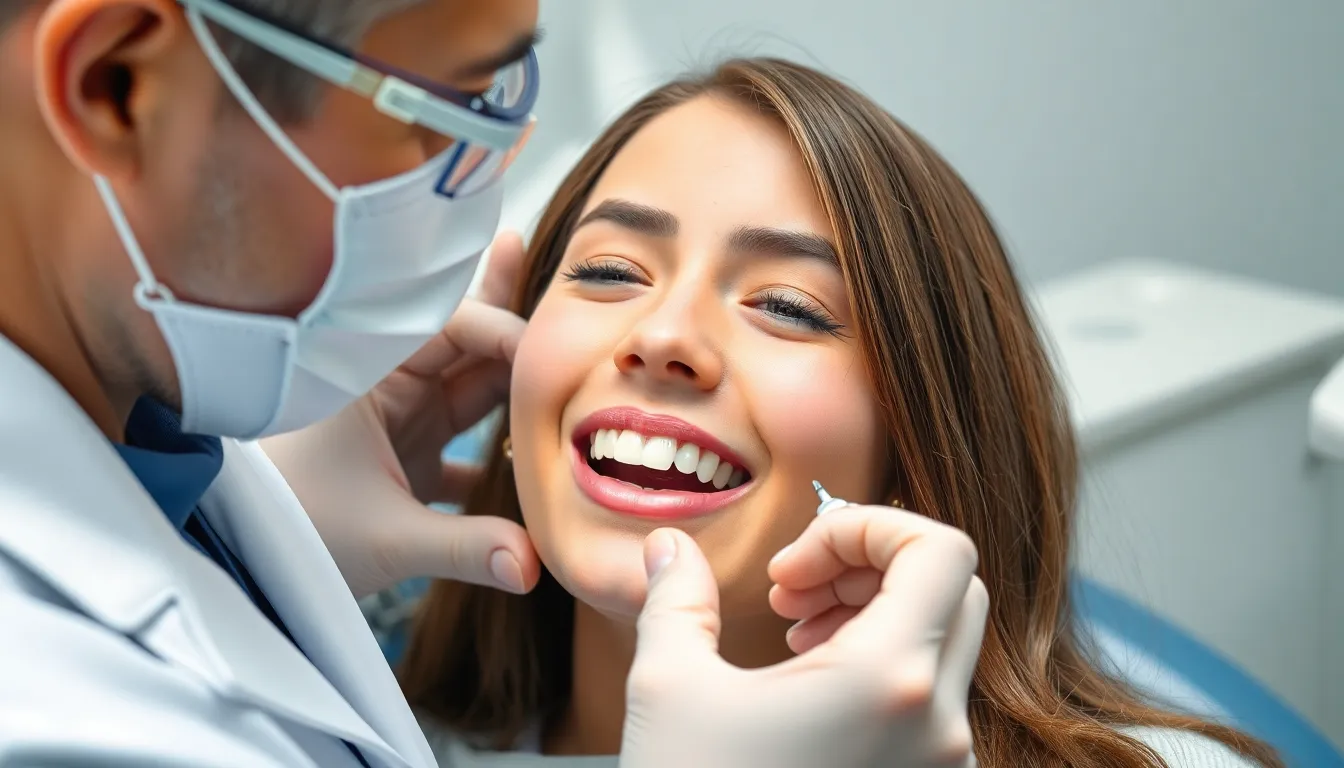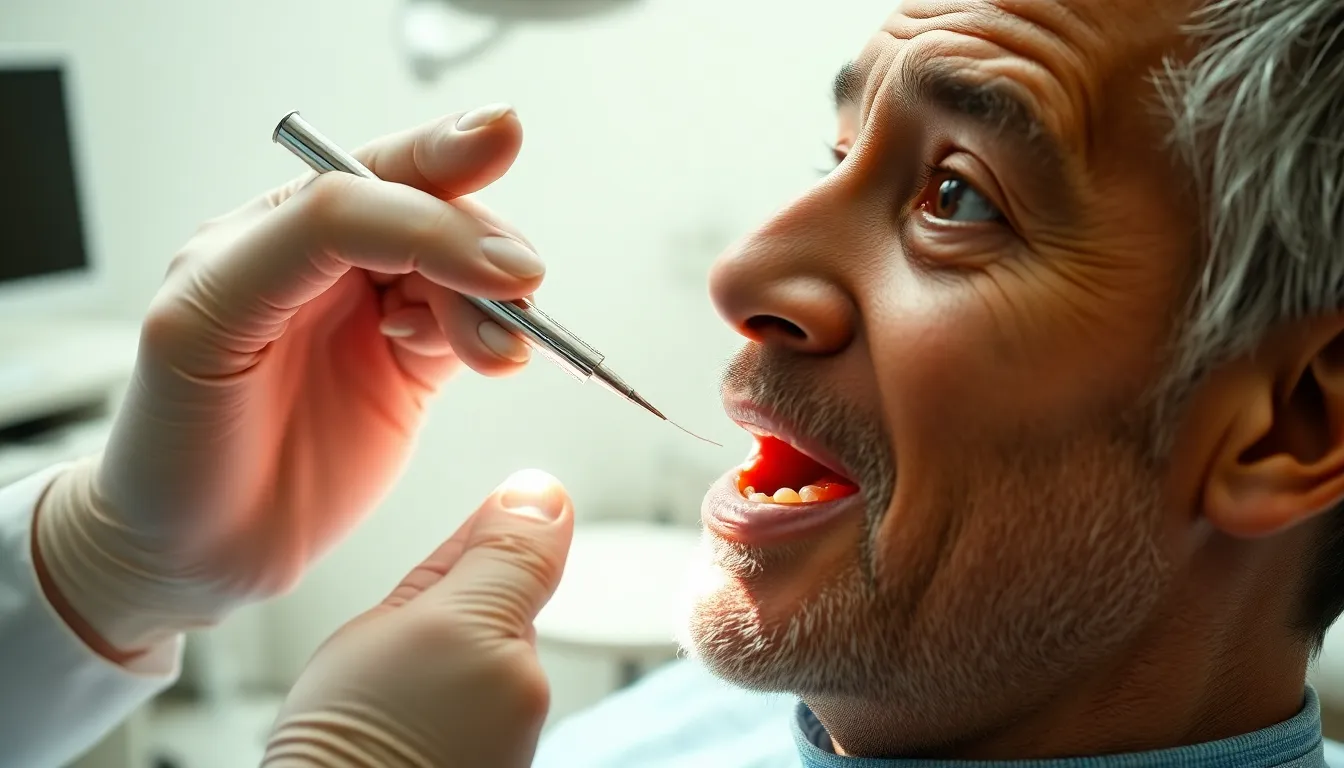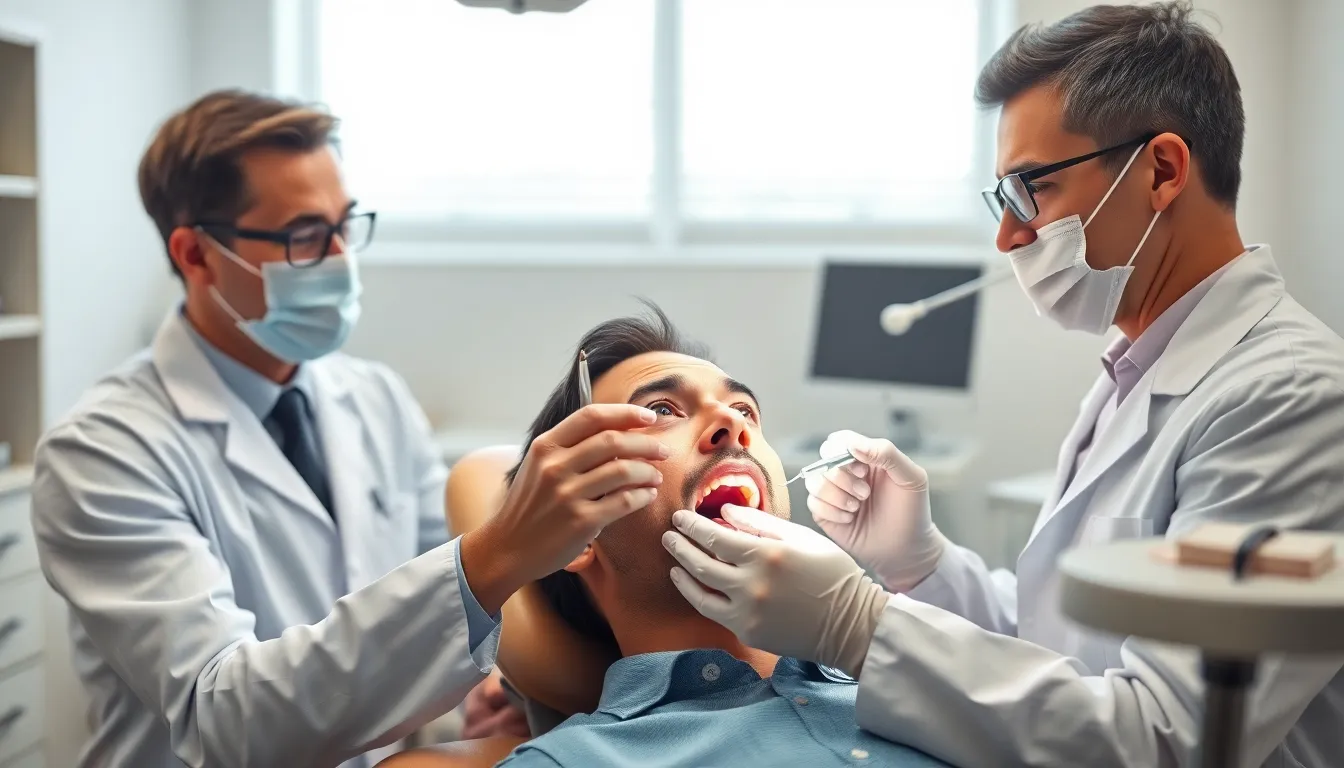Are you self-conscious about your buck teeth and wondering how to fix them? You’re not alone—millions of people seek answers for protruding front teeth that affect both their smile and confidence.
Buck teeth (medically known as malocclusion or overbite) can result from childhood habits like thumb-sucking, genetics, or improper jaw development. The good news? Modern dentistry offers multiple effective answers ranging from braces and clear aligners to veneers and surgical options. In this comprehensive guide, we’ll explore the best treatments to correct buck teeth, helping you achieve the straight, confident smile you’ve always wanted.
Understanding Buck Teeth: Causes and Concerns
Buck teeth, protruding front teeth that extend beyond the normal alignment, create both aesthetic and functional challenges for many individuals. Let’s explore the medical terminology and underlying causes of this dental condition to better understand how it develops.
Medical Term: Malocclusion and Overjet
Dentists use exact terminology to describe buck teeth professionally. Malocclusion refers to the misalignment of teeth when the jaws close, while overjet specifically measures the horizontal distance between the upper and lower front teeth. A normal overjet ranges from 2-3mm, but buck teeth typically present with an overjet exceeding 4mm. Orthodontists classify this condition as a Class II malocclusion, often accompanied by an improper bite relationship. The severity varies from mild cases barely noticeable to important protrusions that affect both function and appearance.
Common Causes of Buck Teeth
Several factors contribute to the development of buck teeth. Genetics plays a primary role, as jaw structure and tooth positioning often run in families. Childhood habits significantly impact dental development – thumb sucking, prolonged pacifier use, and tongue thrusting all exert pressure that can gradually push teeth forward. One of my patients, Sarah, developed prominent buck teeth after thumb sucking until age 8, demonstrating how these seemingly innocent habits create lasting effects.
Skeletal abnormalities, including disproportionate jaw growth where the upper jaw outgrows the lower jaw, frequently cause buck teeth. Missing or impacted teeth create spacing issues that allow adjacent teeth to drift forward. Poor dental care leading to premature tooth loss disrupts the natural alignment as remaining teeth shift to fill gaps.
Orthodontic Solutions for Buck Teeth

Modern dentistry offers several effective treatments for buck teeth that can transform your smile and improve oral function. Each option provides unique advantages depending on your exact needs, preferences, and lifestyle.
Traditional Braces: How They Work
Traditional braces remain one of the most reliable methods for correcting buck teeth. Metal brackets attach to your teeth and connect with wires that your orthodontist tightens periodically to shift teeth into proper alignment. This time-tested treatment typically lasts 12-24 months depending on the severity of your overjet. Some cases require tooth extraction to create adequate space for proper alignment. Traditional braces work effectively for patients of all ages – children, teenagers, and adults alike. Many of Dr. Harris’s patients appreciate the predictable results and comprehensive correction that traditional braces provide, especially for more severe cases of buck teeth.
Clear Aligners as an Alternative Option
Clear aligners like Invisalign offer a more discreet alternative to metal braces while effectively correcting buck teeth. These custom-made transparent trays apply gentle pressure to gradually move teeth into alignment, similar to traditional braces but without metal components. Treatment with clear aligners typically spans 12-18 months for mild to moderate buck teeth cases. The removable nature of aligners allows for easier eating and cleaning compared to fixed braces. Though generally more expensive than traditional options, many adult patients find the aesthetic benefits worth the investment. Dr. Harris notes that compliance plays a crucial role in success with aligners – patients must wear them 20-22 hours daily to achieve optimal results.
Lingual Braces: The Hidden Solution
Lingual braces provide the effectiveness of traditional braces with added discretion by attaching to the back surfaces of your teeth. This placement makes them virtually invisible when you smile or speak, appealing to image-conscious teens and professionals. The treatment process mirrors that of conventional braces, gradually shifting teeth into proper alignment over a similar timeframe. Custom-fitted to the unique contours of your teeth, lingual braces require specialized training to install and adjust properly. Even though their higher cost and initial adjustment period for speech and comfort, many patients with buck teeth select this option for its combination of effectiveness and aesthetics. One of Dr. Harris’s executive patients chose lingual braces specifically because they allowed him to maintain his professional appearance during important presentations while still addressing his buck teeth concerns.
Surgical Options for Severe Cases

When braces and aligners aren’t enough to correct severe buck teeth, surgical intervention becomes necessary. Orthognathic surgery offers a permanent solution for individuals with important jaw misalignment that contributes to protruding front teeth.
Orthognathic Surgery Explained
Orthognathic surgery repositions the upper and lower jaws to create proper alignment and function. This procedure involves precise cutting and realignment of the jawbones to correct severe malocclusion issues. Surgeons typically work along with orthodontists to ensure comprehensive treatment, with braces often required both before and after surgery to achieve optimal tooth positioning. The surgery addresses not only the aesthetic concerns of buck teeth but also improves bite mechanics, speaking ability, and chewing function. Many patients experience dramatic facial profile improvements following jaw surgery, as the procedure creates better balance between facial features.
Recovery and Results from Jaw Surgery
Recovery from orthognathic surgery progresses through distinct phases, with initial swelling and discomfort lasting approximately two weeks. During the first few weeks, you’ll follow a liquid or soft food diet while your jaw heals and stabilizes. Most patients return to work or school within 2-3 weeks, though complete healing takes 3-6 months as the bone fully integrates in its new position. The long-term results are typically outstanding, with patients experiencing important improvements in facial appearance, dental function, and confidence.
Dr. Todd B. Harris notes, “I’ve seen remarkable transformations in patients who’ve undergone orthognathic surgery for severe buck teeth. One memorable case involved a 28-year-old woman with a 12mm overjet who had been embarrassed by her smile her entire life. Following combined orthodontic treatment and upper jaw surgery, she not only achieved a beautiful smile but also reported improved breathing, reduced TMJ pain, and newfound confidence in both professional and social situations.”
Unlike temporary cosmetic fixes, orthognathic surgery combined with orthodontic treatment provides permanent correction for severe buck teeth, addressing the structural causes rather than just masking symptoms. Post-surgical maintenance typically includes wearing retainers to prevent orthodontic relapse, ensuring your investment in treatment lasts a lifetime.
At-Home Habits That Support Treatment

Supporting your professional buck teeth treatment with proper at-home care significantly improves outcomes and treatment efficiency. While professional intervention is necessary for correcting buck teeth, your daily habits play a crucial role in ensuring successful treatment and maintaining results long-term.
Proper Oral Hygiene During Correction
Maintaining exceptional oral hygiene becomes even more important during buck teeth correction. Brush your teeth at least twice daily with fluoride toothpaste, paying special attention to cleaning around braces or aligners to prevent staining and cavity formation. Using interdental brushes or floss threaders helps clean effectively between teeth and around brackets where food particles often get trapped. Rinsing with an antiseptic mouthwash reduces bacteria levels and protects your gums during orthodontic treatment, creating an optimal environment for teeth movement.
Dr. Todd B. Harris often tells patients, “The success of your orthodontic treatment is 50% what happens in my office and 50% what happens at home with your oral hygiene routine. I’ve seen patients reduce their treatment time by months simply by maintaining impeccable oral care.”
Breaking Harmful Habits That Worsen Buck Teeth
Eliminating habits that contribute to buck teeth is essential for successful correction. Children should avoid thumb sucking and prolonged pacifier use, as these actions push front teeth forward and increase overjet. Mouth breathing and tongue thrusting behaviors contribute significantly to teeth misalignment and should be addressed through conscious effort and sometimes professional therapy. Nail biting, pen chewing, and similar nervous habits apply unwanted pressure on your front teeth, potentially undoing progress made through orthodontic treatment.
One patient, Sarah, shared her experience: “After six months of braces, my orthodontist couldn’t understand why my teeth weren’t moving as expected. It turned out my habit of resting pencils between my front teeth during study sessions was counteracting the treatment. Once I became aware and stopped this habit, my progress accelerated dramatically.”
Following your orthodontist’s instructions precisely, such as wearing retainers or aligners for the prescribed duration each day, supports proper teeth movement. Performing any recommended oral exercises should be done cautiously and only as directed by your dental professional, as no definitive home remedies exist that can straighten buck teeth without professional intervention.
Cost Considerations and Insurance Coverage

Correcting buck teeth involves careful financial planning alongside choosing the right treatment option. Understanding both the costs and potential insurance coverage helps you make informed decisions about your orthodontic care.
Average Price Range for Different Treatments
Traditional braces typically cost between $1,900 and $5,000, making them one of the more affordable options for buck teeth correction. Clear aligners like Invisalign range from $3,000 to $10,000, with the price varying based on treatment complexity and duration. For severe cases requiring jaw surgery, costs escalate significantly to $20,000-$40,000, including both the surgical procedure and recovery care. Minor cosmetic corrections for slight buck teeth issues may cost around $1,200, though this varies widely by provider and location. Geographic location plays a substantial role in pricing—metropolitan areas often charge premium rates compared to smaller cities or rural practices.
Dr. Todd B. Harris notes, “Many patients are surprised by the price variation between providers even within the same city. I always recommend getting at least three consultations to compare not just costs but also the proposed treatment plans and provider experience.”
How to Maximize Insurance Benefits
Dental insurance often provides limited coverage for buck teeth correction, especially for adults seeking treatment. Most plans classify orthodontics as partially covered or consider them cosmetic procedures with minimal benefits. Contact your insurance provider directly to verify exact coverage details before starting any treatment. Many orthodontic offices employ insurance specialists who can help determine your exact benefits and estimate out-of-pocket costs.
Take advantage of flexible spending accounts (FSAs) or health savings accounts (HSAs) to pay for treatments using pre-tax dollars. These accounts effectively reduce your overall treatment cost by the percentage of your tax bracket. Many orthodontists offer in-house payment plans, spreading the cost over 12-24 months, often without interest. Some patients explore dental tourism options, seeking treatment in countries where orthodontic care costs significantly less while maintaining quality standards.
Choosing the Right Dental Professional

Finding the proper dental specialist is essential for effectively treating buck teeth. Your treatment journey begins with selecting a professional who has the exact expertise needed for your condition.
Orthodontist vs. Dentist: Who to See
Orthodontists specialize exclusively in teeth alignment and jaw positioning issues, making them the ideal choice for buck teeth treatment. General dentists provide comprehensive oral healthcare but typically refer patients with important malocclusion to orthodontists for specialized care. The primary difference lies in their training—orthodontists complete an additional 2-3 years of specialized education beyond dental school focused on correcting misalignments.
Dr. Todd B. Harris often tells his patients, “I had a patient named Sarah who spent six months with her family dentist trying to address her protruding front teeth before coming to see me. Within one consultation, we created a targeted treatment plan that addressed not just the cosmetic aspects but the underlying structural issues causing her overjet.”
When seeking treatment for buck teeth, your initial dental appointment might be with your regular dentist, who can perform a preliminary assessment. For mild cases, they might offer basic answers, but more important protrusions typically require an orthodontist’s expertise. Orthodontists use specialized diagnostic tools like cephalometric X-rays to analyze jaw relationships and develop comprehensive treatment plans customized to your exact type of malocclusion.
Scheduling consultations with both professionals gives you the benefit of multiple perspectives. Many patients find that orthodontists provide more detailed treatment options specifically designed for correcting buck teeth, while dentists excel at maintaining overall oral health during your orthodontic treatment journey.
Timeline: What to Expect During Treatment
Correcting buck teeth requires time and patience, with treatment duration varying based on the severity of your condition and the chosen correction method. Each treatment option follows a exact timeline and process to effectively shift your teeth into proper alignment.
Braces
Traditional braces typically take 12 to 24 months to correct buck teeth. Your orthodontic journey with braces involves regular adjustment appointments every 4-6 weeks, where your orthodontist tightens the wires to continue guiding your teeth into their desired positions. Metal brackets attached to your teeth connect with wires that apply consistent pressure, gradually shifting the protruding front teeth backward into alignment with the rest of your dental arch. Patients often notice visible improvements within the first 6 months, though complete correction requires the full treatment period.
Dr. Todd B. Harris notes, “Many of my patients are surprised by how quickly they adapt to wearing braces. While the initial adjustment period might be uncomfortable, most report that within two weeks, they hardly notice them anymore except during adjustments.”
Invisalign (Clear Aligners)
Invisalign treatment usually spans 12 to 18 months for buck teeth correction, making it comparable to traditional braces in treatment duration. You’ll receive new sets of custom-made clear aligners every 2-4 weeks, each set slightly different to progressively move your teeth. Clear aligners offer a less visible treatment option, appealing to adults and teens concerned about appearance during treatment. For optimal results, you must wear your aligners for 20-22 hours daily, removing them only for eating and cleaning. Some mild cases show important improvement in as little as 6 months with strict compliance to the wearing schedule.
Surgery
Surgical intervention becomes necessary for severe buck teeth cases where the misalignment stems from jaw structure issues rather than tooth position alone. Orthognathic surgery provides faster structural correction but requires a recovery period lasting several months. The surgical approach often combines with orthodontic treatment (braces or aligners), extending the total treatment time to potentially 36 months. Initial healing takes 2-3 weeks, with complete bone healing occurring over 9-12 months. Surgery addresses fundamental jaw relationship problems that braces alone cannot correct, offering comprehensive results for patients with important malocclusions.
Short-Term vs. Long-Term Correction Options
Short-term correction options for buck teeth typically span 6-12 months and work best for mild cases with minimal protrusion. Clear aligner systems designed for minor corrections can achieve results in as little as 6 months when the issue is primarily cosmetic rather than functional. These abbreviated treatments focus on the front teeth without addressing comprehensive bite mechanics.
Long-term correction spans 12-36 months and provides comprehensive answers for moderate to severe buck teeth cases. Traditional braces and full Invisalign treatment programs fall into this category, offering complete correction of both aesthetic and functional concerns. Treatments involving surgical intervention naturally extend the timeline but address important jaw misalignments that cause buck teeth. Teenagers typically experience faster tooth movement than adults, potentially shortening treatment duration by several months.
Conclusion
Taking the step to correct buck teeth is a worthwhile investment in both your appearance and oral health. Whether you choose traditional braces Invisalign clear aligners or opt for surgical intervention your journey toward a straighter smile requires patience and commitment.
Remember that costs vary significantly between treatment options but many financial answers exist to make these procedures more accessible. Selecting the right dental professional—whether an orthodontist or general dentist—will significantly impact your treatment success.
With proper care consistent follow-through and maintaining good oral habits you’ll be well on your way to achieving the confident smile you deserve. The timeline may seem long but the lifetime of benefits makes the process truly worthwhile.
Frequently Asked Questions
What causes buck teeth?
Buck teeth (malocclusion or overbite) can develop due to genetic factors, childhood habits like thumb sucking or prolonged pacifier use, and skeletal abnormalities where the upper jaw outgrows the lower jaw. These factors can lead to protruding front teeth that extend beyond normal alignment, creating both aesthetic and functional challenges.
How are buck teeth diagnosed?
Buck teeth are diagnosed through dental examination where professionals measure the overjet (horizontal distance between upper and lower front teeth). An overjet exceeding 4mm typically indicates buck teeth. Dentists may take X-rays and impressions to assess the severity and determine appropriate treatment options.
What treatment options are available for buck teeth?
Several effective treatments exist for buck teeth, including traditional metal braces (12-24 months), clear aligners like Invisalign (12-18 months), and lingual braces attached to the back of teeth. For severe cases, orthognathic surgery may be necessary to reposition the jaws. Treatment choice depends on severity, patient preference, and budget.
How much does buck teeth correction cost?
Treatment costs vary widely: traditional braces typically range from $1,900-$5,000, clear aligners from $3,000-$10,000, and orthognathic surgery for severe cases can cost $20,000-$40,000. Insurance coverage is often limited, especially for adults. Many orthodontists offer payment plans, and FSA/HSA accounts can help manage expenses.
Should I see a dentist or orthodontist for buck teeth?
While general dentists can provide initial assessments, orthodontists specialize in teeth alignment and jaw positioning, making them better equipped to treat buck teeth effectively. It’s beneficial to schedule consultations with both to gain multiple perspectives. Orthodontists typically offer more detailed treatment plans specifically for buck teeth correction.
How long does treatment for buck teeth take?
Treatment duration varies based on severity and method: traditional braces typically take 12-24 months with adjustments every 4-6 weeks, while Invisalign usually spans 12-18 months. Severe cases requiring surgery may extend treatment to 36 months. Mild cases might be corrected in 6-12 months. Age and compliance with treatment instructions also affect timeline.
Can adults get buck teeth corrected?
Yes, adults can absolutely get buck teeth corrected. While treatment is easier in children whose jaws are still developing, adults can achieve excellent results with braces, clear aligners, or in severe cases, surgery. The process might take longer for adults, but age is not a barrier to achieving a straighter smile.
What home care is required during buck teeth treatment?
Maintaining excellent oral hygiene is crucial during treatment. Brush at least twice daily, use interdental brushes for braces, and rinse with antiseptic mouthwash. Break harmful habits like thumb sucking and nail biting. Follow orthodontist instructions regarding retainer wear, dietary restrictions, and regular check-ups to ensure successful treatment outcomes.







